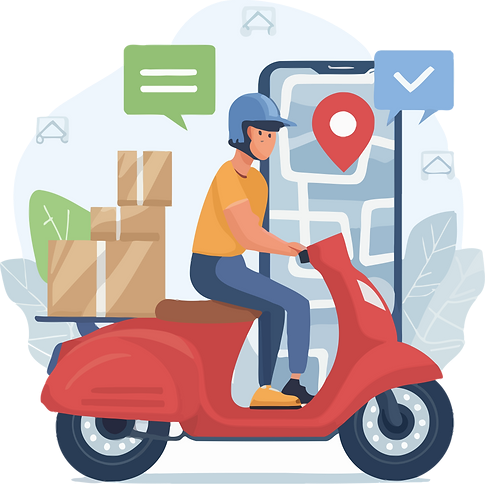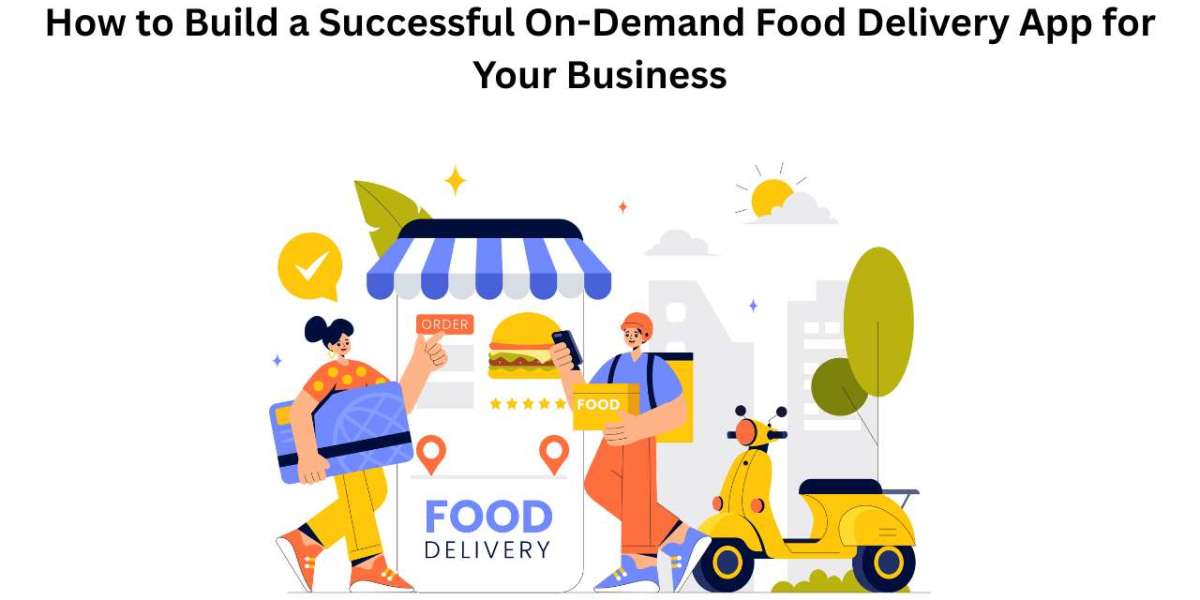The demand for food delivery apps is growing every year, and customers expect fast, smooth, and convenient ordering experiences. Whether you are a restaurant owner, a cloud kitchen, or a startup entering the food-tech space, building a strong platform can help you reach more customers, increase revenue, and automate operations. This guide explains exactly how to build a successful food delivery app, what steps are involved, and why working with an experienced food delivery app development company can help you launch faster and smarter.
Understand Your Business Model First
Before you start development, you must be clear about the type of platform you want to build. Your business model determines your app features, workflows, and overall costs.
Single Restaurant App
Best for restaurants that want direct orders without paying aggregator commissions. It gives full control over customer relationships and branding.
Multi-Restaurant Marketplace
Allows customers to browse food from multiple restaurants in one place. This model requires more features, strong backend architecture, and advanced delivery management.
Cloud Kitchen Ordering App
Cloud kitchens rely completely on online orders, and having a dedicated app ensures better visibility, automated operations, and higher customer retention.
By choosing the right model early, you reduce development mistakes and ensure the app serves your business goals properly.
Plan Features That Add Real Value
A successful food delivery app must satisfy the needs of customers, restaurants, delivery partners, and the admin. Instead of adding too many features at once, focus on the features that matter most for a smooth experience.
Customer App Features
Customers interact with the app the most, so their experience should be simple, fast, and intuitive. Your app should include easy registration, clean menu display, filters for faster selection, secure payments, order tracking, and quick reordering options. If customers can complete an order in seconds, they will return often.
Restaurant Panel Features
Restaurants require tools to accept and process orders quickly. They need real-time order notifications, menu management, pricing updates, food availability control, and sales analytics. A good dashboard helps restaurants run operations without confusion or delays.
Delivery Partner Features
Delivery partners must receive delivery tasks, find directions easily, update order status, and track their earnings. A well-designed delivery app improves delivery speed and reduces operational headaches.
Admin Panel Features
The admin panel controls the entire system. It must offer complete visibility into users, partners, commissions, reports, offers, and overall platform performance. A strong admin backend ensures long-term stability and smooth growth.
When these four panels work together seamlessly, the platform becomes reliable and efficient for every user type.
Focus on Strong User Experience
User experience plays a major role in the success of your app. If the design is confusing or slow, users will uninstall it quickly. A strong UX keeps customers coming back and boosts order frequency.
Key UX Elements
Your app should have a simple layout, clear buttons, smooth navigation, fast-loading screens, visually appealing menus, and a minimal checkout flow. Small improvements in design can turn occasional users into frequent customers.
Choose the Right Technology Stack
Your technology stack directly impacts performance, long-term maintenance, and scalability. A professional food delivery app development company helps you choose a tech stack that supports real-time operations, secure transactions, and high traffic during peak hours.
Technology Choices You Must Finalize
You need to select platforms (Android, iOS, or both), backend technology, database, hosting servers, third-party integrations, and mapping systems. These decisions affect speed, reliability, and long-term success.
Build a Scalable Backend Architecture
The backend supports everything happening in the app. It manages menus, orders, users, payments, notifications, and delivery data. A scalable backend ensures that even when your business grows or traffic spikes, the app continues to perform smoothly.
Why Scalability Matters
If your app lags or crashes during busy hours, customers will quickly switch to competitors. A scalable backend helps you expand to more cities, more restaurants, and more users without major rework.
Integrate Secure and Flexible Payment Systems
A strong payment gateway is essential because customers expect safe and flexible payment options. Your app should support UPI, cards, digital wallets, net banking, and cash on delivery. Security features like encryption and two-factor authentication build trust and protect sensitive data.
Payment Experience Matters
The smoother the payment process, the higher the order completion rate. Even a few seconds of delay can cause customers to abandon their cart.
Add Real-Time Order Tracking for Transparency
Order tracking is one of the biggest expectations of modern food delivery users. Customers want to know when the restaurant accepts the order, when the food is prepared, and where the delivery partner is located.
Benefits of Tracking
Tracking builds trust, reduces support calls, and improves customer engagement. Restaurants also get better clarity about preparation time, and delivery partners follow more efficient routes.
Use Automation to Reduce Manual Effort
Automation helps restaurants and delivery partners work faster. Automated inventory updates, smart order assignment, instant notifications, and analytics dashboards save time and reduce errors. Startups with higher order volumes especially benefit from automated operations.
Automation Leads to Consistency
When your system automates repetitive tasks, you maintain accuracy even during rush hours.
Read More: Build a Handyman App Like Uber: Key Features, Costs & Benefits
Build an MVP Before Full Version
Launching a minimum viable product (MVP) helps you validate your idea. Instead of spending money on a fully loaded app, launch a version with essential features first. This helps you collect real user feedback, improve your platform, and invest in features that truly matter.
MVP Benefits
You reduce risks, save development costs, improve product-market fit, and launch faster.
Plan a Strong Launch and Marketing Strategy
Even the best app needs marketing. You must create awareness before launch and push promotions after launch. Social media ads, influencer partnerships, referral rewards, and first-order discounts help attract users quickly.
Keep Users Engaged
Push notifications, loyalty programs, and targeted offers increase repeat orders and long-term growth.

Importance of Choosing the Right Development Partner
Building a food delivery app requires expertise in UI/UX, backend design, mobile development, payment integration, real-time features, and cloud architecture. Working with a professional food delivery app development company ensures your app is technically strong, scalable, and performance-driven. They guide you through the right features, tech decisions, security requirements, and launch strategies.
Conclusion
Building a successful food delivery app requires a clear plan, strong features, smart technology choices, and an excellent user experience. Every step—from selecting the business model to choosing the right tech stack—plays a major role in your app’s long-term performance. When you collaborate with an experienced food delivery app development company, you accelerate development, reduce risks, and build a platform that can compete confidently in the growing digital market. With the right strategy and reliable development support, your business can create a powerful food delivery solution that drives growth and delivers value to customers.
FAQs
How long does it take to build a food delivery app?
Development time usually ranges from 4 to 12 weeks depending on features and customization.
Do I need separate apps for customers and delivery partners?
Yes, each user type requires a dedicated panel or application for smooth workflows.
Can small restaurants build their own food delivery app?
Absolutely. Many small restaurants build their own apps to avoid aggregator commissions and gain direct customer control.
How much does a food delivery app cost?
Costs depend on features, technology, design, and scalability requirements.
Why should I work with a development company?
A professional team ensures secure payments, quality development, reliable performance, and long-term scalability.




